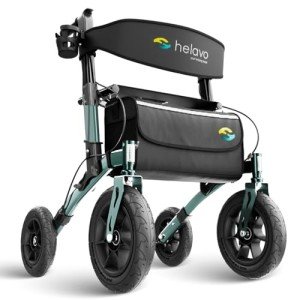
Top Performance Walker
Add a review FollowOverview
-
Founded Date June 19, 1915
-
Sectors Automotive Jobs
-
Posted Jobs 0
-
Viewed 4
Company Description
What’s The Job Market For Elderly Walker Professionals Like?
The Importance of Elderly Walkers: Enhancing Mobility and Independence
As individuals age, their bodies undergo different changes that may affect their mobility. Conditions such as arthritis, osteoporosis, and other persistent conditions can make navigating the environment challenging for the Elderly Walker. Luckily, assistive devices like walkers can considerably boost Mobility Aid, making sure that seniors maintain their self-reliance and Premium Quality Rollator of life. This post will look into the various kinds of walkers offered, their advantages, and essential considerations when choosing the right one.
Comprehending the Different Types of Walkers
A walker can provide the essential support for seniors having a hard time with mobility. Nevertheless, not all walkers are produced equivalent. Here’s a thorough breakdown of the various types of walkers offered.
| Kind of Walker | Description | Best For |
|---|---|---|
| Standard Walker | A lightweight frame with four legs providing standard support. | People needing assistance while walking. |
| Two-Wheeled Walker | A walker with two wheels at the front enabling simpler movement. | Users who require more mobile support for faster walking. |
| Four-Wheeled Walker | A Non-Slip Rollator Walker with four wheels, brakes, and a seat. | Active seniors who require more mobility and a location to rest. |
| Knee Walker | A specialized walker with a padded platform for resting the knee. | Individuals recovering from foot or ankle injuries. |
| Folding Walker | A walker that can be collapsed for Easy Maneuver Rollator Walker storage and transportation. | Seniors requiring convenience when traveling. |
Table 1: Types of Walkers
Advantages of Using a Walker
Walkers provide a wide range of benefits for seniors, consisting of:

- Enhanced Stability: Walkers give additional support to the user, helping to cultivate confidence while walking.
- Enhanced Balance: With a walker, seniors can rearrange their weight, improving balance and lowering the danger of falls.
- Increased Independence: Users can move around their homes and communities more easily, enabling them to take part in social activities.
- Reduced Pain: Walkers can reduce the effect on joints and muscles, making movement less painful for conditions like arthritis.
- Flexible Usage: Walkers appropriate for numerous environments, whether indoors, outdoors, or on unequal surface areas.
Table 2: Benefits of Using a Walker
Selecting the Right Walker
Selecting the right walker is important to optimizing mobility and making sure convenience. Here are some factors to consider:
- Weight Capacity: Ensure that the walker can support the user’s weight. Many walkers have a specified weight limitation.
- Height Adjustment: Adjustable height features make sure that the walker is set to the appropriate level for the user’s height, promoting good posture and convenience.
- Wheels vs. No Wheels: Depending on the user’s capabilities and environment, a walker with wheels might be more advantageous for movement, while a non-wheeled walker may offer more stability.
- Additional Features: Some walkers feature built-in seats, storage, or devices (like cup holders) that can improve user experience.
Table 3: Considerations for Choosing a Walker
Upkeep of Walkers
Proper upkeep of walkers is vital for guaranteeing safety and longevity. Here are some fundamental upkeep suggestions:
- Regular Inspections: Check for cracks, rust, or loose screws and make sure that the rubber pointers on the legs are intact.
- Wheel Maintenance: Ensure that wheels move easily and are not stuck; lube them if needed.
- Changes: Periodically examine if the height and settings stay correct, changing them as required to maintain user comfort.
Table 4: Maintenance Tips for Walkers
FAQs About Elderly Walkers
1. What is the average expense of an elderly walker?
The prices of walkers can vary considerably based upon the type and features. Requirement walkers might cost between ₤ 50-₤ 100, while specialty walkers or rollators can vary from ₤ 100 to ₤ 300.
2. Are walkers covered by insurance?
Many insurance strategies, consisting of Medicare, cover the expense of walkers, provided they are deemed medically essential. It’s essential to talk to your insurance supplier for specifics.
3. How do I understand when my loved one needs a walker?
Indications might include problem walking individually, frequent falls or near-falls, and increased tiredness while carrying out daily activities. A health care specialist can supply a comprehensive assessment.
4. Can walkers be utilized outside?
Yes, lots of walkers can be utilized both indoors and outdoors. If planning to use a walker outdoors, consider a design with wheels or larger legs for stability on various surfaces.
5. How long can a walker last?
With appropriate maintenance, a good quality walker can last for several years, though wear and tear will differ depending upon usage frequency and conditions.
Walkers are indispensable tools that can restore mobility and self-reliance for seniors while guaranteeing their security. As individuals live longer and lead active lifestyles, buying appropriate assistive gadgets like walkers is more vital than ever. Understanding the kinds of walkers offered, their advantages, and how to choose the ideal one can empower users and their caretakers to make educated options. Eventually, the Best Rollator Walker walker can cause enhanced quality of life, permitting aging people to remain active participants in their communities.
